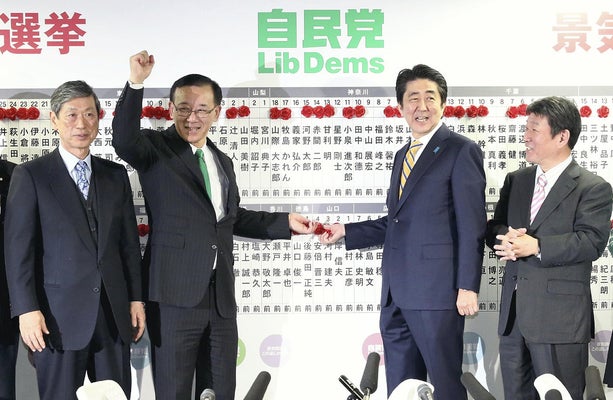No Other Alternative?
Despite being a democratic nation with free transparent elections, one political party, the Liberal Democratic Party (LDP), has constantly turned out victorious throughout postwar history.
As many prominent parties arose and disappeared over the years, the LDP has managed to not only survive multiple crises, but still retains its position as the absolute ruling party.
To be clear, the LDP does not enjoy popularity or enthusiastic support, but rather the opposite. Many voters have associated the long-ruling party with corruption and old-time politics, generating the wish for a viable alternative.
The problem is that major attempts for regime change has failed miserably in the past, with the most recent DPJ administration being remembered as “the dark ages.”
With the current opposition party (CDJ) basically being the remnants of the former DPJ and Socialist factions, their political nature and policies seem to lack persuasion towards the general public.
Needless to say, the LDP has continuously stressed this point during elections, criticizing their opponent’s past failures, inexperience, and impractical approaches.
But, the absence of a pragmatic alternative isn’t the only reason why the LDP keeps winning elections.
The Economic Miracle
While the majority of Japanese constituents passively choose the lesser of two evils, one must not neglect the LDP’s accomplishments, most notably the rapid economic growth and the Japan-US alliance.
Japan’s postwar economic miracle, lifting a battered nation up to the world’s second largest GDP in roughly two decades, can indeed be attributed to LDP policies.
Although most of the credit goes to the highly skilled, powerful bureaucrats, the industrial policy that promoted an effective structure and enhanced international competitiveness was laid out by the LPD government.
They shrewdly utilized the bureaucrats by delegating substantial authority while taming them through post-retirement positions in large corporations or semi-public organizations.
Simultaneously, the LDP established strong ties with large corporations to secure their support in exchange for economic benefits.
This firm relationship between the LDP, bureaucrats, and corporations would later be know as the “Iron Triangle” – a fundamental structure that brought continuous growth under a stable LDP government.
What made the iron triangle so successful was the fact that it benefited not only the three key players, but also the public as well. The fruits would be delivered to the ordinary citizen in the form of wage increase and improvement of living standards.
In just a thirty decades, urban residents went from living in patched-up shacks to owning TVs and air-conditioners. This transformation is still remembered as the postwar economic miracle, and subconsciously serves as a reference point when choosing political parties.
Securing The Rural Areas
The LDP was also keen in delivering results to its rural constituents whom occupied the majority of the support base.
Understanding the influence of parochialism towards elections, the LDP heavily engaged in “pork barrel politics” – satisfying each voting district with funding, infrastructure and other specific benefits.
Surely, the opposing parties have tried to deliver promises and convince the rural voters, but the LDP tends to gain the upper hand by paying more attention and diverting more resources through their large organization.
For instance, even the most powerful LDP politicians would kick off their election campaign in small rural towns, whereas the CDJ picks populated urban centers.
The LDP also makes sure their campaign posters are distributed to even the most remote areas from day one. Therefore, it is not uncommon to see LDP posters in the most mountainous regions or remote islands, indicating their commitment towards these sparsely populated areas.
Given the opposition party’s limited resources and the fact that they can expect more votes in the urban areas, such discrepancy is somewhat inevitable. But, it does give the impression that the LDP takes more care about its rural constituents.
This long-time approach has certainly paid off since most elderly residents in the rural areas remain loyal to the LDP to this day. New LDP politicians inheriting their predecessor’s old support base have become a common sight, giving them an advantage from the start.
In contrast, the Kanto region (Tokyo and its surroundings), which holds nearly 1/3 of Japan’s population, has proven to be more “liberal” and volatile, facilitating uncertain outcomes.
If we move our attention to the Osaka region, the second largest population center, the local Japan Innovation Party or “Ishin” has secured an unchallenged position in recent years.
Compared to these urban areas, the LDP still enjoys a stable source of votes in the countryside, even unopposed in some districts. As long as they can maintain their stronghold in the countryside, the recent decline in urban districts would not be fatal yet.
To sum up, the clever combination of the iron triangle and pork barrel politics has managed to work out quite well, especially throughout the Cold War period, satisfying the overall public and giving the LDP a passing grade.




















Comments